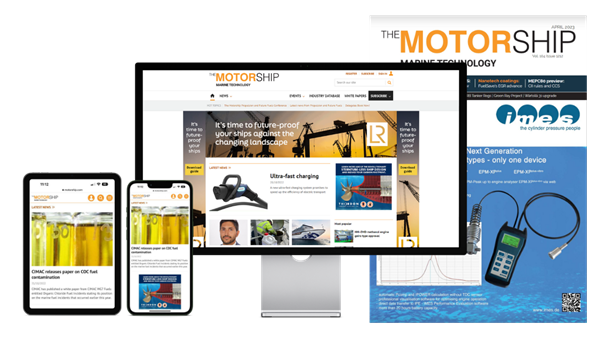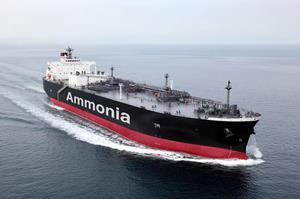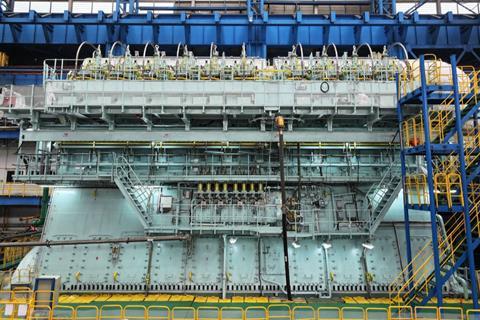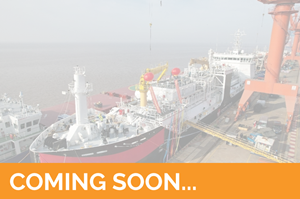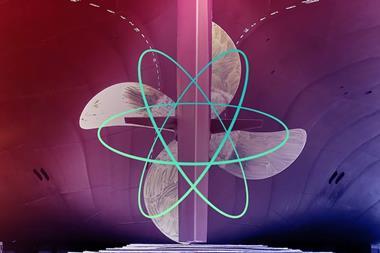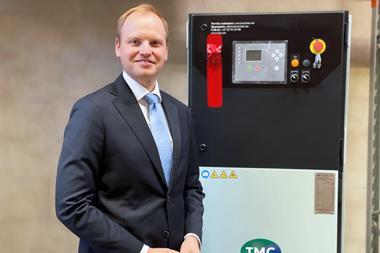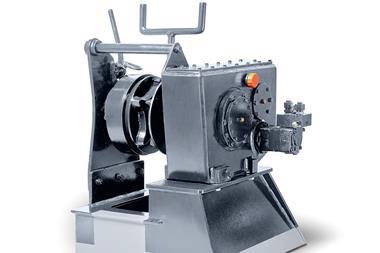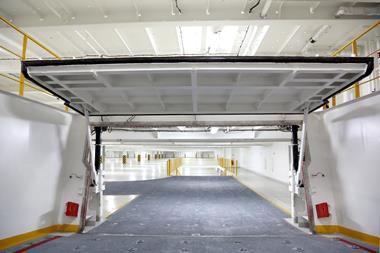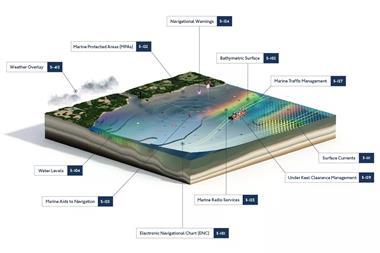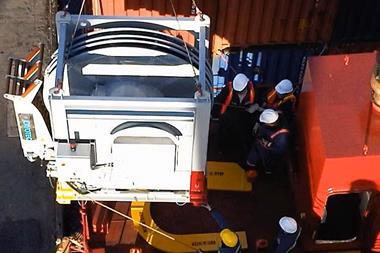As the trend towards electrification of marine vessels intensifies, so do the problems posed by harmonics. Marine vessels rely on extensive electrical networks to power a series of must-not-fail functions.
 Content from our commercial partners
Content from our commercial partners
Variable speed drives, also known as variable frequency drives (to be referred to as ‘drives’ in this article), are essential solutions which ensure these networks are stable, as well as energy efficient, to maximise performance and meet important sustainability objectives.
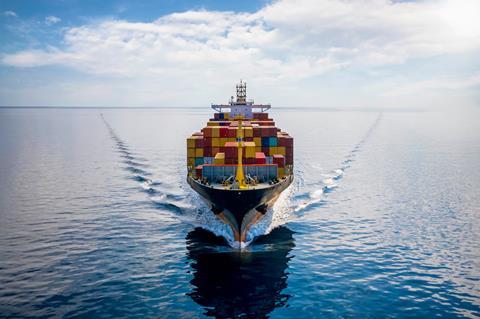
A somewhat lesser-known fact is that drives and many other types of non-linear load, such as EC (electronically commutated) motors, LED or fluorescent lightning, computers, uninterruptible power supplies (UPS), and Wi-Fi routers, can cause an undesirable event knows as harmonic distortion in the vessel’s electrical network.
As global demand for marine vessel services grows alongside pressures to operate in an environmentally conscious manner, more and more ships for cargo transport and leisure cruises are being built and retrofitted with electric propulsion systems.
Sustainability aside, there are numerous other benefits offered by electric propulsion, including greater redundancy, improved maneuverability and reclaimed deck space that can be utilized for cargo and other applications.
The trend towards electrification is clear. In 2021, the market for electric ships was valued at just shy of $5 billion, according to Straits Research. By 2030, it is estimated to reach almost $12.8 billion thanks to a compound annual growth rate of well over 11%.
This will only increase the amount of electricity needed for ships to operate. In addition to propulsion systems, vessels rely on their own extensive electricity networks to power a huge array of critical functions – applications that are often reliant upon the use of drives.
In practice, drives convert supply voltage to a variable voltage and frequency to control the speed of a 3-phase induction motor and match the needs of the application, ensuring energy savings and superior motor control can be achieved across a range of vital equipment, be it main propulsion drives, compressors, pumps or thrusters. The ability to control motor speed is critical, not least because many motors run at well below their peak load most of the time.
Indeed, stability and reliability are essential traits of marine electrical systems, which must be operational at all times, especially when sailing in challenging conditions at sea. At the same time, marine operators are under pressure to ensure energy efficiency on board as the sector seeks to reduce its environmental footprint and cut costs associated with power consumption.
More electricity equates to more harmonics

However, while drives help to tick these important boxes they, like other types of non-linear loads, are prone to causing harmonics – a power quality issue leading to efficiency, reliability, cost and safety problems for vessel operators and users.
Harmonics pollute electrical networks and prompt erratic behavior of equipment connected to them. The extent to which networks are disrupted is presented as a percentage, in what is known as total harmonic distortion (THD) value.
Rather than drawing currents in a typical sinusoidal fashion, the front-end rectifiers draw discontinuous, pulsed currents to drive different motor speeds based on application demand at any given time. Today, this non-linear loading on marine vessels can reach up to 80% of the onboard electrical generating capacity, therefore resulting in THD of up to 20%.
While drives have been singled out because of their common existence on vessels, it should be noted that they are not the only equipment that can create harmonics. Indeed, almost every type of modern electronic device are harmonics producers – electronically commutated motors, LED or fluorescent lighting, mobile phone chargers, computers, uninterruptible power supplies and Wi-Fi routers are all examples of non-linear loads. Unfortunately, it is a cost of modernity – old-fashioned lightbulbs, for instance, do not cause harmonics because they are linear loads.
Why are harmonics a problem for marine vessel operators?
While most electrical networks can cope with a degree of harmonic current, issues will arise when non-linear loading becomes too high a proportion of the overall load.
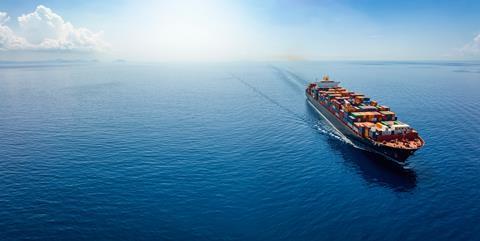
Left unaddressed, harmonics can cause damage to electronic equipment, interfere with communications systems and prompt false readings on measurement devices. In serious instances, harmonics can lead to the overheating of transformers, cables, motors, generators and capacitors – this leads to energy losses, shortened equipment life, unreliable operation and even total shutdowns. In marine environments, the shutdown of electrical networks can be catastrophic, especially when maneuverability is limited in adverse conditions at sea.
Moreover, heating in the windings of transformers, generators and induction motors could potentially result in fire. A high-profile incident occurred in 2010 aboard the RMS Queen Mary 2 as it was approaching the Barcelona coast. Here, harmonics caused a deterioration of the capacitators in the aft harmonic filter room, causing an explosion which knocked out all four propulsion motors and creating a total vessel blackout. Fortunately, the ship was clear of navigational hazards and was able to drift safely in the open sea.
Indeed, such is the seriousness of the threat posed by harmonics that marine classification bodies around the world, including the American Bureau of Shipping, often treat it as a SOLAS (safety of life at sea) issue. Resultantly, many such organizations have introduced limitations on the magnitude of harmonic disruption permitted on their classed vessels.
How can the harmonics problem be solved?
Proactively dealing with harmonics is therefore a high priority issue for the marine sector, especially as it continues to tread a path of electrification on the way towards net zero.
A common approach to tackling the issue is to invest in cooling systems or ‘oversized’ critical equipment such as transformers and cables, this helping to overcome any overheating caused by the harmonic current. Additionally, the oversizing of backup generators is another method that is broadly adopted to mitigate some of the challenges.
There are significant drawbacks to these solutions, however. Oversizing in particular is a costly and often inefficient cure – it is the opposite of proactive in the sense that it does nothing to prevent harmonics in the first instance. Furthermore, in marine environments where space is often at a premium, the option to oversize equipment is not always practical.
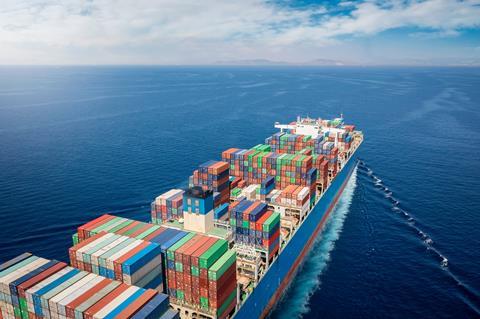
Why ULH drives have a key role to play
In the case of harmonics, prevention is certainly better than cure, and this is where solutions such as ultra-low harmonic (ULH) drives show their worth.
What sets ULH drives apart is that they have harmonics mitigation such as active front end converters and line filters already built in. This removes the need to install external filters, special transformers, and multi-pulse arrangements, providing vessel owners with sizeable savings in terms of cost, time and space. The latter is especially relevant in the marine context, not least because traditional harmonics solutions are fitted outside of the drive box and take up space, which aboard vessels is typically at a premium.
In addition, where there are disturbances in the network, ULH drives such as those in ABB’s ACS880 industrial drives range contain an active supply unit which can boost the output voltage to enable secure, reliable motor operation, helping to reduce the amount of downtime and associated costs. Specifically, the wall-mounted AC880-31 and cabinet-built ACS880-37 are particularly suited to marine vessel applications. What’s more, the compact design of these “3 wire in, 3 wire out” ULH drives significantly reduces engineering and installation time.
When compared to external filters, including passive and active harmonic filters, ULH drives emerge favorably for several reasons beyond installation practicalities. In normal conditions, ULH drives operate with a THD of 3%, this being significantly lower than the typical 5 to 10% associated with passive and active harmonic filters. This difference is largely down to the fact that ULH drives prevent harmonics from entering the system as opposed to filtering harmonics that have already been allowed to build up.
Indeed, by providing a proactive and preventative solution that reduces harmonic currents, ULH drives mitigate the risk of marine equipment overheating, thereby removing the need to oversize equipment such as transformers and cables.
In doing so, electrical assets can be optimized to match the actual load more closely, thus making their capital cost lower. If this is applied to an entire facility or vessel, a ‘right-sizing’ ripple effect will start to take place. Indeed, deploying ULH drives can help cut cable costs by around 10% compared to using standard 6-pulse drives; switchgear and circuit breaker costs can be cut by anywhere between 10% and 30%; distribution transformer costs can be reduced by 20%; and generator costs can be halved.
Taking a proactive approach to harmonics
ABB’s ACS880 industrial drives range of ULH drives are already making waves across the marine sector.
For example, we recently supplied one of the world’s leading marine electrical system integrators with several dozen wall-mounted ACS880-31 drives to meet the narrow hull structure and harmonic requirements of its customer. Representing the perfect technical solution, it has enabled the client’s customer to save space on its drilling vessel and benefit from simple installation and maintenance processes, as well as stable performance.
ABB has also successfully supplied navy vessels with wall-mounted and cabinet-built ACS880 low-harmonic drives to offer lower harmonics and total motor control of waste compactor machines on board.
From frigates to cruise liners and many other types of ship in between, marine vessels rely heavily on what can be extremely complex electrical networks to function effectively, economically and safely. As the sector continues its course towards electric propulsion, these networks will become even larger and more difficult to maintain – not least due to the increased potential for harmonics to cause disruption.
Vessel operators, therefore, need to consider how to proactively manage harmonics to minimize downtime, improve energy efficiency, enhance safety and deliver all-important cost benefits in the future. As an alternative to deploying traditional methods such as oversizing key electrical assets, the use of ULH drives should be considered.
To find out more about how ABB’s ULH drives can counter the harmonics problem, visit https://new.abb.com/drives/segments/marine

“Juha Suvanto is global sales manager for ABB Drive products in the Marine segment. He has more than 20 years of experience with ABB’s energy-efficient products especially in the shipping industry, where equipment reliability is one of the most important criteria when choosing a supplier. In addition, he understands the importance of the sustainable development in the marine industry and the impact of the industry in question on the marine environment. He acts as strong support for global sales, product development and other stakeholders.”

